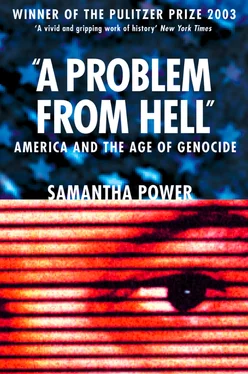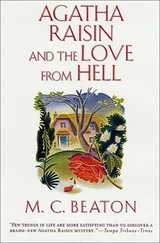Becker did not know why Caldwell had been killed, but she suspected that one faction wanted either to embarrass another or to plug the crack of an opening to the outside world before it widened. A murder would deter meddlesome foreigners from visiting again. On December 23, 1978, Becker and Dudman arrived in Beijing with the wooden casket containing Caldwell’s body. Two days later Vietnam launched a full-scale invasion of Cambodia.
Aftermath
“Humanitarian” Rescue
Kassie Neou, one of Cambodia’s leading human rights advocates today, survived Pol Pot’s madness and the outside world’s indifference. An English teacher before the genocide, he posed as a taxi driver, shedding his eyeglasses and working around the clock to develop a “taxidriver manner.” He had to make the KR believe that he had not been educated. Captured nonetheless, Neou was tortured five times and spent six months in a KR prison with thirty-six other inmates. Of the thirty-seven who were bound together with iron clasps, only Neou’s hope of survival was rewarded. The young guards executed the others but spared him because they had grown fond of the Aesop’s fables he told them as bedtime stories. When Neou discusses the terror today, he lifts up his trouser leg and displays the whitened, rough skin around his ankle where a manacle held him in place. The revolutionaries’ crimes were so incomprehensible that some part of him seems relieved to be left with tangible proof of his experience.
During his imprisonment, though he had been highly critical of the earlier U.S. involvement in Cambodia, Neou was one of many Cambodians who could not help but dream that the United States would rescue his people. “When you are suffering like we suffered, you simply cannot imagine that nobody will come along to stop the pain,” he remembers. “Everyday, you would wake up and tell yourself, ‘somebody will come, something is going to happen.’ If you stop hoping for rescue, you stop hoping. And hope is all that can keep you alive.” Survivors of terror usually recall maintaining similar, necessary illusions. Without them, they say, the temptation to choose death over despair would overwhelm.
Neou had fantasized that the United States would spare him certain death, but it was Vietnam, the enemy of the United States, that in January 1979 finally dislodged the bloody Communist radicals. In response, the United States, which in 1978 had at last begun to condemn the KR, reversed itself, siding with the Cambodian perpetrators of genocide against the Vietnamese aggressors.
Vietnam’s invasion had a humanitarian consequence but was not motivated by humanitarian concerns. Indeed, for a long time Vietnam and its Soviet backer had blocked investigation into the atrocities committed by their former partner in revolution. In 1978, however, as KR incursions into Vietnam escalated, Vietnam had begun detailing KR massacres. Vietnamese officials used excerpts from Ponchaud’s book, Year Zero, as radio propoganda. They called on Cambodians to “rise up for the struggle to overthrow the Pol Pot and Ieng Sary clique” who were “more barbarous…than the Hitlerite fascists.” Vietnam also began reindoctrinating and training Khmer Rouge defectors and Cambodian prisoners seized in territory taken from Cambodia. It crept ever closer to the Soviet Union, joining the Council for Mutual Economic Assistance (COMECON), signing a twenty-five-year treaty of friendship and cooperation with the Soviets, and receiving ever larger military shipments from them. The Soviet Union joined Vietnam’s anti-KR campaign, condemning the KR “policy of genocide.”
For the previous year, the United States had been flirting with restoring relations with Vietnam but was not keen on seeing it overrun its neighbor. 146From the U.S. embassy in Bangkok, Ambassador Morton Abramowitz wrote in a secret August 1978 cable to the State Department: “Neither the Khmers nor the world would miss Pol Pot. Nonetheless, the independence of Kampuchea, particularly its freedom from a significant Hanoi presence or complete Hanoi domination, is a matter of importance to us.” 147Far from encouraging the overthrow of the KR, as Neou and others would have hoped, U.S. officials urged the Vietnamese to think twice. In November 1978 Secretary of State Vance sent a message to the Vietnamese: “Don’t you see what lies ahead if you invade Cambodia? This is not the way to bring peace to the area. Can’t we try some UN instrument, use the UN in some way?” 148
The United States had its own reasons for frowning upon a Vietnamese triumph. It planned to restore diplomatic relations with China on January 1, 1979. China’s hostility toward Vietnam and its Soviet military and political sponsor greatly influenced the U.S. reaction to the invasion. For neither the first nor the last time, geopolitics trumped genocide. Interests trumped indignation.
Aware of the Khmer Rouge’s isolation and unpopularity in the West, Hanoi thought it would earn praise if it overthrew Pol Pot. It also concluded that regardless of the outside world’s opinion, it could not afford to allow continued KR encroachments into the Mekong Delta. By December 22, 1978, Vietnamese planes had begun flying forty to fifty sorties per day over Cambodia. And on December 25, 1978, twelve Vietnamese divisions, or some 100, 000 Vietnamese troops, retaliated against KR attacks by land. Teaming up with an estimated 20, 000 Cambodian insurgents, they rolled swiftly through the Cambodian countryside. Despite U.S. intelligence predictions that the KR would constitute a potent military foe, McGovern’s earlier forecast of rapid collapse turned out to be prescient. Lacking popular support, the Khmer Rouge and its leaders fled almost immediately to the northern jungle of Cambodia and across the Thai border.
The Vietnamese completed their lightning-speed victory with the seizure of Phnom Penh on January 7, 1979.
Skulls, Bones, and Photos
Upon seizing the country, the Vietnamese found evidence of mass murder everywhere. They were sure this proof would strengthen the legitimacy of their intervention and their puppet rule. In the months and years immediately after the overthrow, journalists who trickled into Cambodia were bombarded by tales of horror. Every neighborhood seemed to unfurl a mass grave of its own. Bones could still be seen protruding from the earth. Anguished citizens personalized the blame. “Pol Pot killed my husband,” or “Pol Pot destroyed the temple,” they said. Rough numerical estimates of deaths emerged quickly. All told, in the three-and-a-half-year rule of the Khmer Rouge, some 2 million Cambodians out of a populace of 7 million were either executed or starved to death. 149National minorities were special targets of the regime. The Vietnamese minority was completely wiped out. Of the 500, 000 Muslim Cham who lived in Cambodia before Pol Pot’s victory, some 200, 000 survived. Of 60, 000 Buddhist monks, all but a thousand perished.
The Tuol Sleng Examination Center in Phnom Penh, which was code-named Office S-21, quickly became the most notorious emblem of the terror. 150A pair of Vietnamese journalists discovered the center nestled in a part of the capital known as Tuol Svay Prey, or “hillock of the wild mango.” While roaming the neighborhood with Vietnamese troops the day after they had seized the capital, they smelled what they thought was rotting flesh and poked their heads into the lush compound that had once served as a girls’ high school. They quickly discovered that of the 16, 000 Cambodians who had arrived there, only five had departed alive. 151
The Tuol Sleng complex consists of four triple-story, whitewashed concrete buildings, lined on the top floor by a Motel 6– like balcony-corridor and overlooking identical grassy courtyards, once playgrounds for the young schoolgirls. A single-floor wooden building divides the compound in two. Some time in late 1975, Kang Keck Ieu (known as “Duch” ), a former schoolteacher, took over the management of the facility and helped turn a seat of innocence into a seat of inhumanity. Most of the instruments found in Tuol Sleng were primitive, “dual-use” garden implements. Building A, which contained individual prison cells, was divided into small rooms, each containing a metal bed frame, an ammunition box to collect the prisoners’ feces, and garden shears, lead pipes, and hoes. When the Vietnamese journalists first entered these rooms in 1979, they found these tools beside bloodied victims whose cadavers lay shackled to the bed posts. The prisoners’ throats had been slit, and their blood still dripped slowly from the beds onto the mustard-and-white-tiled floors.
Читать дальше












